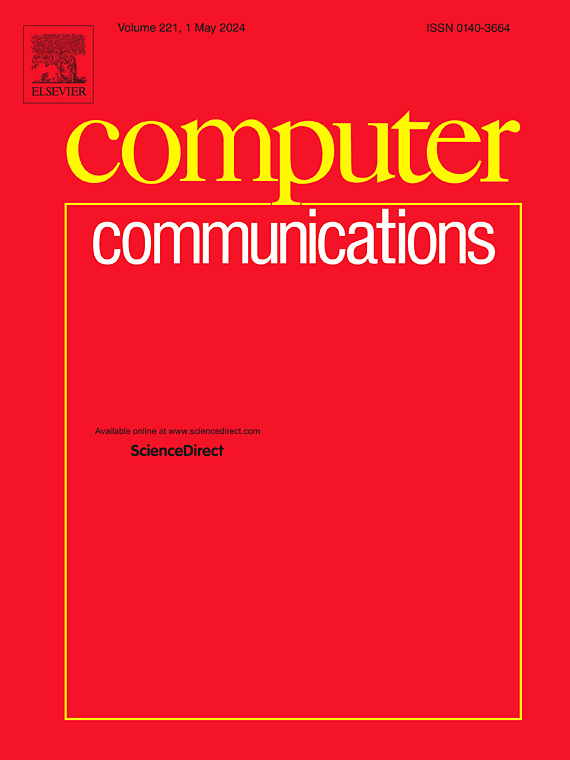Modeling and predicting starlink throughput with fine-grained burst characterization
IF 4.5
3区 计算机科学
Q1 COMPUTER SCIENCE, INFORMATION SYSTEMS
引用次数: 0
Abstract
Leveraging a dataset of almost half a billion packets with high-precision packet times and sizes, we extract characteristics of the bursts emitted over Starlink’s Ethernet interface. The structure of these bursts directly reflects the physical layer reception of OFDMA frames on the satellite link. We study these bursts by analyzing their rates, and thus indirectly also the transition between different physical layer rates. The results highlight that there is definitive structure in the transition behavior, and we note specific behaviors such as particular transition steps associated with rate switching, and that rate switching occurs mainly to neighboring rates. We also study the joint burst rate and burst duration transitions, noting that transitions occur mainly within the same rate, and that changes in burst duration are often performed with an intermediate short burst in-between. Furthermore, we examine the configurations of the three factors burst rate, burst duration, and inter-burst silent time, which together determine the effective throughput of a Starlink connection. We perform pattern mining on these three factors, and we use the patterns to construct a dynamic N-gram model predicting the characteristics of the next upcoming burst, and by extension, the short-term future throughput. We further train a Deep Learning time-series model which shows improved prediction performance.
用细粒度突发特性建模和预测星链吞吐量
利用近5亿个数据包的数据集,具有高精度的数据包时间和大小,我们提取了在Starlink以太网接口上发射的爆发的特征。这些突发的结构直接反映了卫星链路上OFDMA帧的物理层接收情况。我们通过分析它们的速率来研究这些爆发,从而间接地研究了不同物理层速率之间的跃迁。结果强调,在转变行为中存在明确的结构,并且我们注意到特定的行为,例如与速率转换相关的特定转变步骤,并且速率转换主要发生在邻近的速率上。我们还研究了联合爆发率和爆发持续时间的转换,注意到转换主要发生在相同的速率内,并且爆发持续时间的变化通常在中间进行一个中间短爆发。此外,我们还研究了三个因素的配置,即突发速率、突发持续时间和突发间沉默时间,它们共同决定了Starlink连接的有效吞吐量。我们对这三个因素进行模式挖掘,并使用这些模式构建一个动态N-gram模型,预测下一个即将到来的爆发的特征,并通过扩展,预测短期的未来吞吐量。我们进一步训练了一个深度学习时间序列模型,该模型显示出改进的预测性能。
本文章由计算机程序翻译,如有差异,请以英文原文为准。
求助全文
约1分钟内获得全文
求助全文
来源期刊

Computer Communications
工程技术-电信学
CiteScore
14.10
自引率
5.00%
发文量
397
审稿时长
66 days
期刊介绍:
Computer and Communications networks are key infrastructures of the information society with high socio-economic value as they contribute to the correct operations of many critical services (from healthcare to finance and transportation). Internet is the core of today''s computer-communication infrastructures. This has transformed the Internet, from a robust network for data transfer between computers, to a global, content-rich, communication and information system where contents are increasingly generated by the users, and distributed according to human social relations. Next-generation network technologies, architectures and protocols are therefore required to overcome the limitations of the legacy Internet and add new capabilities and services. The future Internet should be ubiquitous, secure, resilient, and closer to human communication paradigms.
Computer Communications is a peer-reviewed international journal that publishes high-quality scientific articles (both theory and practice) and survey papers covering all aspects of future computer communication networks (on all layers, except the physical layer), with a special attention to the evolution of the Internet architecture, protocols, services, and applications.
 求助内容:
求助内容: 应助结果提醒方式:
应助结果提醒方式:


